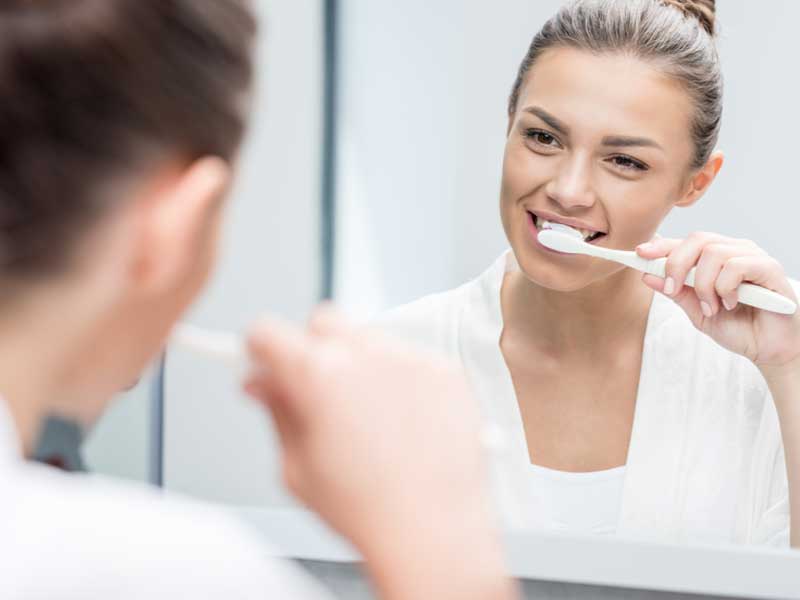
01
May
Your Toothbrush Has Come a Long Way to Keep Your Teeth and Gums Healthy

Your toothbrush is one of the most important tools you have in your home to keep your pearly whites healthy and beautiful. Used properly twice a day, your toothbrush will help you ward off tooth decay, gum disease and even bad breath. Its job in your daily oral hygiene kit is vital because unchecked gum disease is one of the main causes of tooth loss for adults.
While toothbrushes today have come a long way, your forebears recognized the importance of brushing your teeth. Early predecessors to the common toothbrush include tree twigs, bird feathers, animal bones and porcupine quills.
Toothbrushes Throughout the Ages
- Ancient Egyptians invented the first toothbrushes (or chew sticks) around 3000 B.C., from frayed ends of wooden twigs.
- Ancient Greeks and Romans used toothpicks, and the Greeks also used rough cloths.
- Ancient Chinese made proto-toothbrushes by attaching rough hog bristles to bamboo or bone, and in the Middle Ages, travelers brought these to Europe.
- Late 18th century Englishman William Addis used his time in prison to carve a bone handle, drill holes and stick boar bristles into it with glue to create a toothbrush. He went on to mass-produce his invention after his release.
- In 1938, the DuPont company manufactured the first “toothbrush” using nylon fibers.
Did you know? Toothbrushing became a widespread practice throughout the United States when soldiers came back from World War II, thanks to hygiene habits in the military.
To Brush or Not to Brush
Keeping your teeth clean is about removing plaque from settling on your teeth. Plaque is fed by the sugars and starches you eat, releasing acids that break down tooth enamel and irritate the gums, which become swollen, tender and red. Cleaning teeth properly can reverse gum disease in the early stages (gingivitis) so that the gums don’t pull away from the teeth. Otherwise, gum pockets can form, allowing bacteria and their byproducts to destroy the supportive bone holding the teeth in place, until they fall out or need to be extracted.
Breaking Down the Toothbrush
You have three main kinds: soft, medium and firm. The No. 1 dentist-recommended version is the soft-bristled brush, as it protects tooth enamel and sensitive gum tissue. Smaller brush heads fit into your mouth better than large ones do so you can maneuver easily around the molars in the back. There are all kinds of bristle designs, such as flat bristles, angled bristles, dome bristles or rippled bristles, so pick one that feels right for you.
Toothbrush handles can be thick or thin, so try both and just make sure it’s comfortable to use. You might enjoy using one that has non-slip grip areas or a flexible brush neck. Whatever you choose, we recommend a toothbrush carrying the American Dental Association® (ADA) Seal of Acceptance on the packaging, showing they have been tested and proven to be safe and effective at cleaning your teeth and gums.
Electric vs. Manual Toothbrushes
Manual toothbrushes are simple and effective, but some people prefer an electric version for ease of use. Children don’t always have the manual dexterity or discipline to use a manual toothbrush effectively, so an electric version can help them. Adults, including seniors, who have compromised dexterity can effectively clean their teeth using an electric toothbrush. Making your daily oral hygiene routine easier helps you do it consistently for better oral health.
Caring for Your Toothbrush
Keep your toothbrush upright in an open container so it can dry out between uses. Never allow it to touch another toothbrush to avoid germs (this also means never sharing your toothbrush, even with healthy family members). Rinse your toothbrush thoroughly after every use. The Centers for Disease Prevention and Control (CDC) advises replacing your toothbrush (or toothbrush head, if using an electric one) every three to four months, or when the bristles are frayed, to brush away food particles and plaque effectively.
Your toothbrush is truly your gateway to a healthy smile; just be sure to brush your front, side and back teeth for at least two to three minutes each session. Your smile will thank you! Call us today if you have any questions or to schedule a visit with our dentist.

